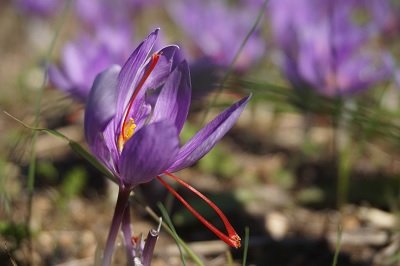Inside BENEO’s new pulse plant: pioneering sustainable protein from faba beans
The results indicated that irrigation events in the first year had a significant impact on cormlet growth
A two-year study was conducted to optimise the production of saffron cormlets in a soilless cultivation system. In the first year, variations in the concentrations of phosphate and boron, as well as the frequency of irrigation events, were assessed. After optimising the substrate composition, the second year focused on investigating the effects of nutrient solution volume and the concentrations of nitrate, iron, and boron on the yield and weight of cormlets and leaves, photosynthetic activity, and the productivity of the nutrient solutions.
The results indicated that irrigation events in the first year had a significant impact on cormlet growth, while phosphate and boron had no substantial effects. The optimal substrate composition was found to be 15 per cent cocopeat, 15 per cent cocochips, and 70 per cent perlite. During the second year, increasing the nutrient solution volume to 225 ml per pot per week and raising the nitrate concentration to 9800 µM significantly boosted leaf weight, total photosynthesis rate, and the proportion of large-sized cormlets (greater than 8 g) to nearly 50 per cent of all cormlets. However, higher concentrations of iron negatively affected the weight of both total and large-sized cormlets. Again, boron concentration exhibited no significant influence on the parameters measured.
The highest productivity of the nutrient solution was achieved with a volume of 150 ml per pot per week, which contained 9800 µM nitrogen and 25 µM iron. These findings highlight the importance of effective irrigation and nutrient management in enhancing both the quantity and quality of cormlet production, potentially leading to increased saffron yields in the subsequent years.

